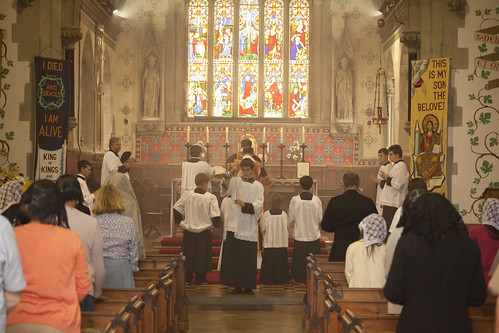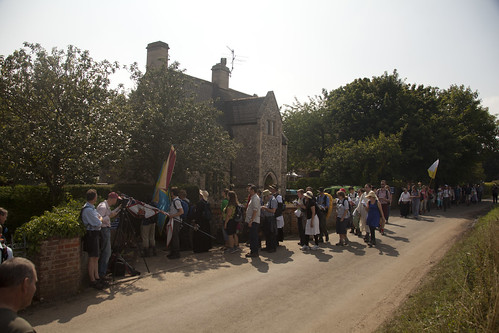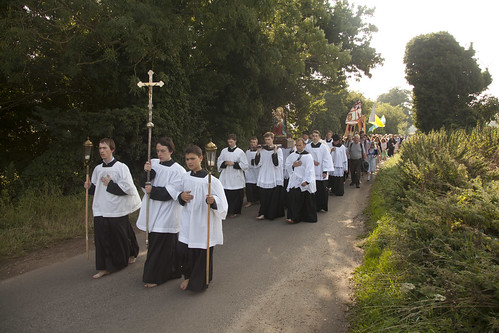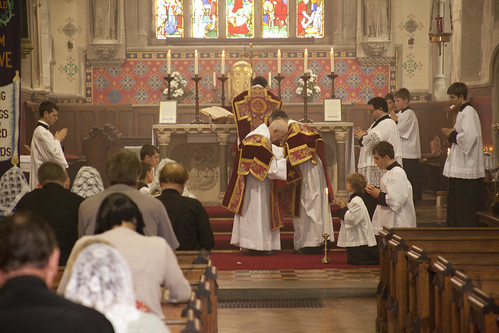 |
| You can't hear what they are saying, but you can see what they mean. |
'Joseph Shaw (Letters, August 23) provides something of a conundrum. On the one hand he knows what other people can't possibly know, such that "liturgical meddlers have done incalculable damage to the spiritual lives of Catholics", and yet, as chairman of the Latin Mass Society, he says we must "allow the liturgy to speak to us" and "be sensitive to its symbolism" and "nuances."
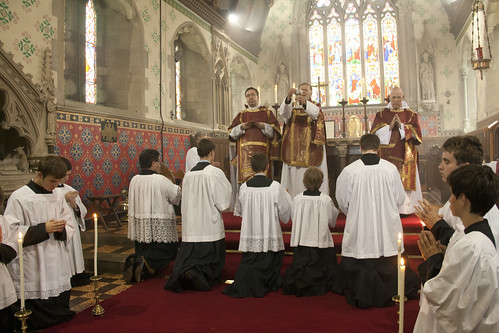 |
| A dramatic presentation of Something very special |
Pope Benedict, Letter to Bishops accompanying the Motu Proprio Summorum Pontificum: 'I have seen how arbitrary deformations of the liturgy caused deep pain to individuals totally rooted in the faith of the Church.'
But back to Mr Whitehead.
But speaking as an "ordinary Catholic", for us to be sensitive to any text, and if that text is to have any "nuances" for us, we must first be able to understand it. Yet I know (with the same degree of perception as Dr Shaw) that at least 99 per cent of English congregations today do not understant Latin. Indeed, in the actual days of the Latin Mass, I was an altar boy and could recite every response both without difficulty and without understanding a word. For me, it had nothing recognisable as a "nuance" and there neither did it "speak" to me, nor have any "symbolism."
Mr Whitehead has forgotten that the liturgy is not just a text. Can you not see the symbolism of, say, the priest washing his hands at the Lavabo, without hearing the text he is reciting, in English? It is a problem if not: the text is to be said silently even in the Ordinary Form. Silly old Paul VI and Bugnini: wrong again!
... So unless Dr Shaw has devised a means of mass (sic) teaching of Latin to almost the whole of English-speaking Catholic congregations, his impressive-sounding references to "nuance", the "liturgy speaking to us" and to its "symbolism", members of the Latin Mass Society would be better to resign and form an English Mass Society, ...to eradicate just the latest work of "meddlers", eg "sending your Holy Spirit on them like the dewfall" (which belongs to and should have been left in the Old Testament), because for 99 per cent of Catholics the previous version was fine, did speak and did have nuance and symbolism.
Yours sincerely,
AK Whitehead, Pontefract, Yorkshire.
Yours sincerely,
AK Whitehead, Pontefract, Yorkshire.
Now it is the Holy Ghost who is under attack, for using obscure imagery in Sacred Scripture. He should have known better: 99% of people are unmoved by poetry and don't know what 'dewfall' is anyway. Or so Mr Whitehead appears to think.
This is one of those letters which seems to teeter on the brink of coherence. One has to be selective, in any case, in choosing what points to respond to; I wrote, and have been published this weekend, as follows.
 |
| The Lavabo: another silent symbol. |
But there is more to engaging with the Latin liturgy than looking at a translation. Bl John Paul II wrote (Dominicae Caenae 1980, 10), speaking of those educated in this liturgy, that ‘through its dignified character [it] elicited a profound sense of the Eucharistic Mystery.’ The fact that it is in a beautiful, ancient, and universal liturgical language, and not our cradle tongue, communicates something to us which, as the late Holy Father worried, is difficult to communicate in any other way.
In a recent survey in America, the respected Centre for Applied Research in the Apostolate found that not only do only half of self-identified Catholics believe in the Real Presence, 37% were not aware that this was the teaching of the Church. They attend Mass in their native language: do they understand it? It seems not.
 |
| The Asperges on Sunday: a poetic image, of sprinkling and washing, acted out. |
